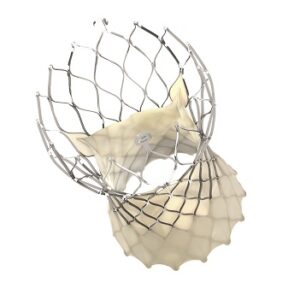
Medtronic has announced two late-breaking data presentations on four-year outcomes from the Evolut Low Risk trial presented at the 2024 Cardiovascular Research Technologies (CRT) meeting (9–12 March, Washington, DC, USA).
A cost-effectiveness analysis demonstrates the positive economic value of transcatheter aortic valve implantation (TAVI) using Evolut compared to surgical aortic valve replacement (SAVR) for low-risk patients. In addition, contemporary data from the Evolut Low Risk Trial reinforces the robust long-term clinical outcomes of Evolut TAVR compared to SAVR in low-risk patients, the company says in a press release.
“At Medtronic, we continue to emphasise that valve design matters. These data further exemplify Medtronic’s dedication to providing differentiated treatment options like the Evolut TAVI platform to reach the growing population of low-risk symptomatic severe aortic stenosis patients,” said Nina Goodheart, senior vice president and president, Structural Heart & Aortic, which is part of the Cardiovascular Portfolio at Medtronic. “We are proud of the excellent clinical outcomes and sustained valve performance, effectiveness, and economic benefits of Evolut TAVI and are committed to advancing evidence around the long-term clinical and economic patient benefits.”
Evolut Low Risk Trial four-year data were analysed to determine cost-effectiveness results of TAVI versus SAVR across the spectrum of surgical mortality risk. The findings showed an economic benefit of TAVI for low-risk patients from a US healthcare system perspective.
The results demonstrate that TAVI resulted in a lifetime incremental cost-effectiveness ratio (ICER) of US$2,119 per quality-adjusted life year (QALY) gained, which is consistent with high economic value. At 30 days, the estimated cost (including index procedure, hospitalisation, and rehabilitation) was US$5,189 lower with TAVI compared with SAVR (US$45,887 versus US$51,075, respectively).
Within the US healthcare system, current American College of Cardiology (ACC)/American Heart Association (AHA) guidelines consider an ICER <US$50,000 per QALY gained to indicate “high value” while an ICER between US$50,000 and US$150,000 per QALY gained is considered “intermediate value” 2022 Medicare data was used to obtain contemporary cost estimates for TAVI and SAVR index hospitalisation along with key cost drivers.
“As more and more patients are diagnosed with aortic stenosis and undergo TAVI, it is important to use devices that offer exceptional results for patients, while also delivering economic value to the healthcare system. These data complement the extensive body of clinical evidence for Evolut TAVI and demonstrate that it is a solution that provides substantial benefit to our patients in a highly cost-effective manner,” said David J Cohen, director of clinical and outcomes research at the Cardiovascular Research Foundation (CRF), director of academic affairs at St Francis Hospital, and faculty member at Columbia University (New York, USA).
Findings from the Evolut Low Risk Trial four-year data comparing TAVI versus SAVR in patients with severe aortic stenosis were re-evaluated with the exclusion of Trifecta surgical valves that were previously withdrawn from the market due to durability concerns. This analysis included the evaluation of 1,292 attempted implants in patients who were randomised to TAVI with a self-expanding, supra-annular CoreValve/Evolut R/PRO valve or to SAVR.
In this contemporary analysis, all-cause mortality or disabling stroke rates at four years were 10.7% in the Evolut TAVR cohort compared to 14.2% in the SAVR cohort (p=0.06). Evolut TAVI had significantly better haemodynamics, an indicator of valve durability, compared to SAVR using contemporary valves (mean gradient 9.8 mmHg TAVR; 11.8 mmHg SAVR; p<0.001) at four years.
“The Evolut TAVI system continues to demonstrate positive clinical outcomes compared to SAVR. This new data supports the growing body of evidence for TAVI at a time when aortic stenosis is the most common surgically managed heart valve disease,” said Basel Ramlawi (Lankenau Heart Institute, Wynnewood, USA). “We are encouraged by the results of this contemporary data, showing that we can help improve outcomes in patients with less risk of mortality and disabling stroke compared to the surgical option.”













